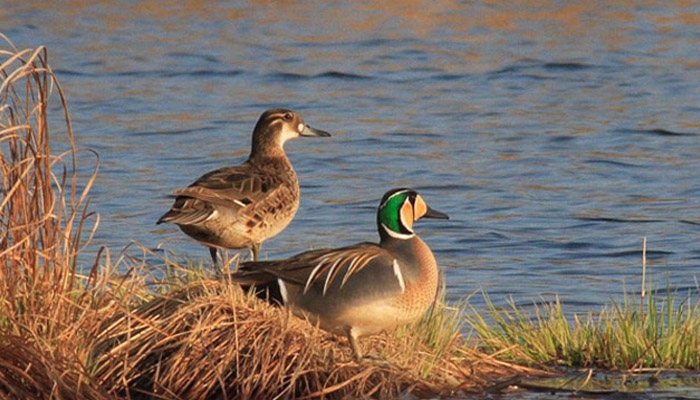
English: Baikal Teal, Spectacled Teal, Formosa Teal
Russian: Чирок-клоктун
German: Gluchente
French: Sarcelle
elegante
Mongolian: Байгалийн нугас
Japanese: トモエガモ (Tomoe-gamo)
Body
length: 39-43 cm
Status: Rare species. According to the IUCN Red List categories and
criteria, the species evaluated as-Vulnerable.Habitat: N and E Siberian species. Declining. A few genuine
European records, including in Britain, but also many escaped free-flying
birds. In Mongolia first of migrating birds arrive in end of March,
beginning of April, the last of migrating birds depart end April, beginning
May. Migrate in flocks, families, and pairs. Migrating birds rest near open
water sources, on banks of rivers, springs, lake shores, and graze in wet
meadows and marshes with short vegetation.
Distribution and range in Mongolia: Winters in South-east Asia, China, Japan and recently 95% of the
population winters in Korea. Global population is estimated to be about 800
thousands birds. Migrates through the Orkhon and Selenge River basins to the
eastern border of Mongolia. Occasionally seen on the Buir Lake, and the Khalkh,
Nomrog, Onon, Ulz and Kherlen Rivers basins very rarely seen on the Khuvsgul
Lake.
Population and Threats: Population and distribution have not been assessed. In wintering
areas the species can be found in numbers larger than 300 thousands.
Conservation Measures: Hunting prohibited since 1995. Listed as Rare animal in the
Annex to the Mongolian Government Resolution #7 (2012), inluded in Appendix II,
CITES. The habitat is partially included within the NSPANS. Some of the
migration route is protected.
Identification:
Breeding ♂ unmistakable, with striking head pattern; white vertical narrow line
at side of breast. Adult♀ an juveniles brownish and streaked like other teals,
and wing and head patterns recall both ♀ Teal (often has a pale patch at base
of tail-side) and ♀ Garganey (well-patterned head; rather similar wing
pattern). Slightly larger and longer-tailed than Teal; bill thin and all grey;
speculum is bordered pale rufous in front, not whitish, and white rear border
always broader.
- Adult
♀: Head pattern distinctive, with small but very prominent and circular white
loral spot (enhanced by dark surround); dark eye-stripe only behind eye, on
many, a whitish bar or wedge runs from the white throat vertically up across
the cheek towards eye; and sometimes there is a dusky kidney-shaped mark on the
upper cheek.
- Adult
♂ eclipse: Like adult ♀, but plumage much richer rufous.
- Juvenile:
Slightly duller brown-grey than adult ♀. Most similar to Teal, but usually told
by more prominent pale loral spot with darker surround (not so conspicuous as
on adult ♀, still usually more prominent than on any Teal), all-grey bill, and
lack of midwing-bar.